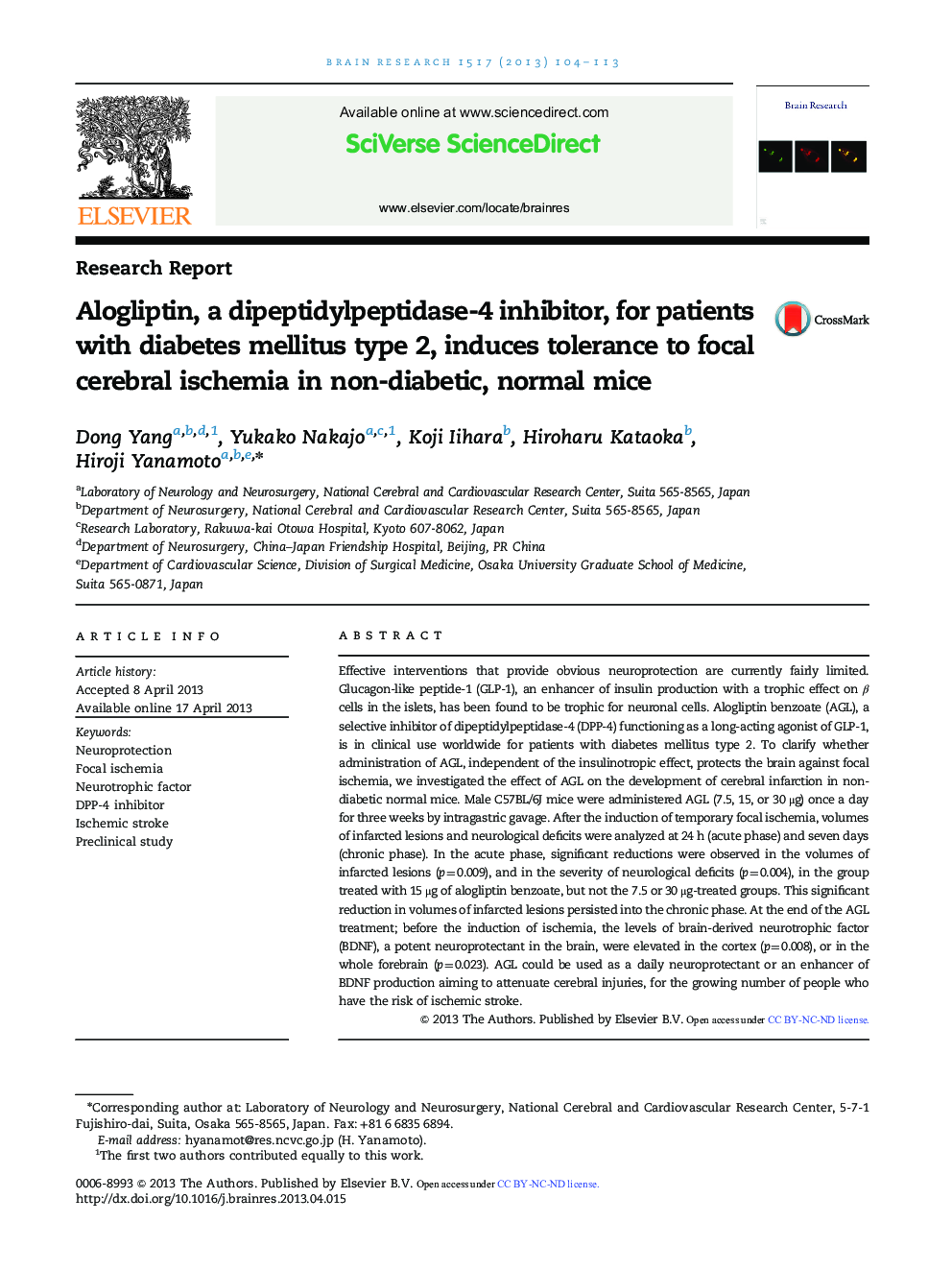| کد مقاله | کد نشریه | سال انتشار | مقاله انگلیسی | نسخه تمام متن |
|---|---|---|---|---|
| 6263850 | 1613922 | 2013 | 10 صفحه PDF | دانلود رایگان |

- Normal mice are treated with alogliptin benzoate, a dipeptidylpeptidase-4 inhibitor.
- The daily, oral treatment induces tolerance in the brain against focal ischemia.
- The treatment increases the levels of brain-derived neurotrophic factor in the brain.
- The size of cerebral infarction and neurological deficits are reduced by the treatment.
- The drug has the potential to minimize cerebral injury induced by ischemic stroke.
Effective interventions that provide obvious neuroprotection are currently fairly limited. Glucagon-like peptide-1 (GLP-1), an enhancer of insulin production with a trophic effect on β cells in the islets, has been found to be trophic for neuronal cells. Alogliptin benzoate (AGL), a selective inhibitor of dipeptidylpeptidase-4 (DPP-4) functioning as a long-acting agonist of GLP-1, is in clinical use worldwide for patients with diabetes mellitus type 2. To clarify whether administration of AGL, independent of the insulinotropic effect, protects the brain against focal ischemia, we investigated the effect of AGL on the development of cerebral infarction in non-diabetic normal mice. Male C57BL/6J mice were administered AGL (7.5, 15, or 30 μg) once a day for three weeks by intragastric gavage. After the induction of temporary focal ischemia, volumes of infarcted lesions and neurological deficits were analyzed at 24 h (acute phase) and seven days (chronic phase). In the acute phase, significant reductions were observed in the volumes of infarcted lesions (p=0.009), and in the severity of neurological deficits (p=0.004), in the group treated with 15 μg of alogliptin benzoate, but not the 7.5 or 30 μg-treated groups. This significant reduction in volumes of infarcted lesions persisted into the chronic phase. At the end of the AGL treatment; before the induction of ischemia, the levels of brain-derived neurotrophic factor (BDNF), a potent neuroprotectant in the brain, were elevated in the cortex (p=0.008), or in the whole forebrain (p=0.023). AGL could be used as a daily neuroprotectant or an enhancer of BDNF production aiming to attenuate cerebral injuries, for the growing number of people who have the risk of ischemic stroke.
Journal: Brain Research - Volume 1517, 23 June 2013, Pages 104-113